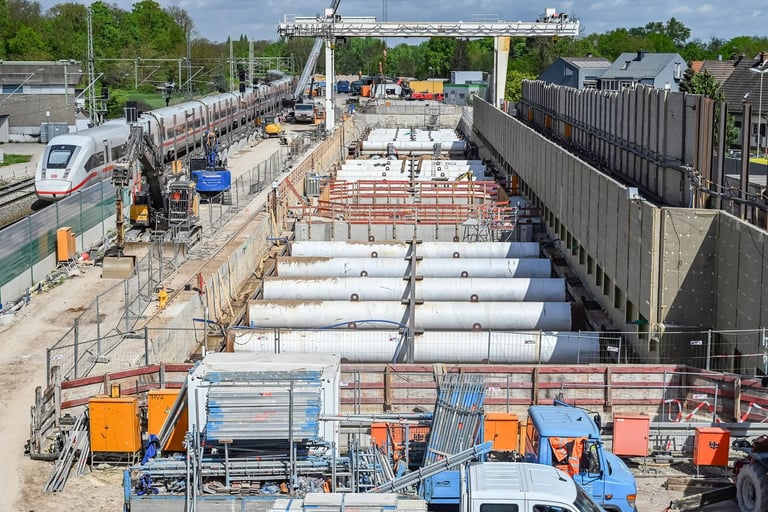Germany's Economic Outlook Bleak: Business Climate Hits Lowest Since February, Recovery Delayed to 2025
August 27, 2024
When adjusted for inflation, the decline in the construction sector's revenues was even steeper at 2.3%.
Concerns about Germany's growth potential are mounting, despite the country not officially being in a recession.
The construction sector has also contributed negatively to growth, with overall revenues in this area falling by 1.0% in the first half of the year.
Investment in equipment, particularly machinery and vehicles, saw a significant decline of 4.1%, exacerbating the economic slowdown.
Germany's economy is facing a significant downturn, highlighted by a drop in the ifo business climate index to 86.6 points in August, marking the lowest level since February.
Economists were caught off guard by this downturn, as they had anticipated at least a slight recovery following a 0.2% growth in the first quarter.
DekaBank's chief economist, Ulrich Kater, has indicated that any expected recovery is now postponed until 2025, with consumer income being a critical factor for improvement.
Current GDP data reflects notable weakness in private consumption, which decreased by 0.2% in the spring, undermining the benefits of wage increases and lower interest rates.
Despite these negative signals, analysts suggest that Germany may avoid a recession by the year's end, thanks to recent real wage increases bolstering domestic consumption.
The focus for Germany should shift from short-term growth rates to long-term economic prospects, as the country faces chronic weaknesses and potential prosperity loss.
The upcoming inflation report is crucial for the European Central Bank as it prepares for an interest-rate decision in September.
Many manufacturers, especially in the capital goods sector, are grappling with decreasing order volumes, further complicating the economic landscape.
Summary based on 40 sources
Get a daily email with more Macroeconomics stories
Sources

Yahoo Finance • Aug 27, 2024
Consumer sentiment in Germany drops significantly in August
Yahoo Finance • Aug 27, 2024
German economy shrinks in Q2 amid weak investment, consumer pessimism
Investing.com • Aug 27, 2024
German economy shrank by 0.1% in Q2, statistics office confirms
Investing.com • Aug 27, 2024
Job concerns weigh on German consumer sentiment in September, finds GfK